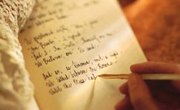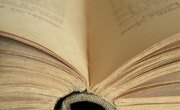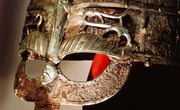Diction is a literary device that signifies the style of the writer. The choice of words and how they are put together or the writer's style is known as diction. There are various forms of diction in writing today and, with a little practice, the reader can identify the form of diction being used and identify the writer's unique style.
Here are 3 steps to help you identify diction:
1. Pay attention to vocabulary
Read closely and pay attention to the vocabulary being used in a piece of writing or literature. Note whether the diction is formal or informal. What choice of words is the writer using and what does he hope to convey? Is his mood happy or sad? Is there anger or another tone of voice you are picking up in his writing? Paying attention to the vocabulary choices and sentences as well as the general mood or tone of the piece will help you pick out the particular diction of this writer.
2. Note the dialect
Is the text written in a certain dialect such as Southern, or perhaps Old English with uses of "thee, thou, thy" and various other Old English colloquialisms? Paying attention to the dialect will help you ascertain the tone of the piece and give you a feel for the particular diction that is being used. Picking out key words of the literary text will help you visualize what the writer is trying to convey to you his reader.
3. Make connections between vocabulary and tone
This will help you to come to conclusions about the writing. Highlight words that convey emotion or show a particular dialect and connect these words to identify the particular style of diction the author is using. These conclusions will help you to understand the text and identify the diction used in the literary piece.
Tip
It may take repeated readings of text before you can identify the particular diction used in the piece. Read the text several times to identify the diction.
Related Articles
Tips
- It may take repeated readings of text before you can identify the particular diction used in the piece. Read the text several times to identify the diction.










